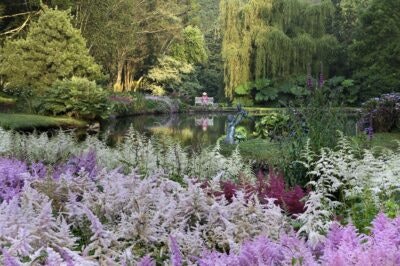Days out in Devon
Devon is full of fantastic indoor and outdoor activities, attractions, and fun things to do. With two major cities, the county town of Exeter, and ‘Britain’s Ocean City’ of Plymouth, both offer the history and heritage Devon is renowned for, as well as big brand shopping and plenty of family days out.
Among the most popular places to visit are Exeter’s historic quay, the Royal Albert Memorial Museum, and the beautiful, 10th-century gothic cathedral. Plymouth is home to the cobbled streets of its famed Barbican, Plymouth Hoe Park, acclaimed museum, The Box, and the National Marine Aquarium.
South Devon is famous for its coastal resorts of Exmouth, Dawlish, and notably, Torbay. Made up of the towns of Brixham, Paignton, and Torquay, the Bay area’s beaches, attractions, and climate mean they’re ideal for visitors of all ages. North Devon is equally as popular with the stunning beaches of Woolacombe, Croyde, and Saunton alongside the picturesque towns of Westward Ho!, Clovelly, and Lynton.
There’s also a whole host of market towns across Devon, each offering a unique experience, from the famous pannier markets of Barnstaple and Tiverton to the characterful towns of Bovey Tracey, Ashburton, and Totnes. A must-see is historic Dartmoor National Park and the pretty village of Widecombe in the Moor, and the towns of Princetown and Chagford.

Marwood Hill Gardens
A magical private garden situated in a wooded valley and created almost from scratch by Dr Jimmy Smart MBE, VMH. Highlights include three inter-linked lakes, National Collections of Astilbe, Tulbaghia, and Japanese Iris, and a Camellia house and plant sales area situated within a walled garden.
Topography, geology, and climate
Though a rural county, Devon features a glorious mix of hills, valleys, and rugged moorland, combined with the uncompromising coastal cliffs and coves on the north coast and the sandy beaches along the south coast. This gives Devon a diverse landscape providing a range of different land qualities and fertile soil types.
The north, east, and west of the county feature a general mix of sandy soils in the northernmost parts near Braunton, and freely draining slightly acid, loamy soils, together with slow, permeable, and seasonally wet, clayey soils reaching from Holsworthy in the west to the foothills of Exmoor National Park, north of Tiverton, in the east.
With similar soils also featuring heavily across the southern half of the county, there’s also a high proportion of bog peat soils and heavy clay soil in the areas over and surrounding the granite outcrops of Dartmoor.
Devon’s weather patterns vary due to its geographical positioning and mix of high and low-lying land. With an overall milder climate, Devon often sees warmer temperatures and hotter spells in summer, averaging around 21ºC (70ºF). Winters can also milder than other areas of England – harsh winters are scarce except on the higher grounds of Dartmoor – with temperatures averaging 4ºC (39ºF).
Torbay’s English Riviera on the south coast, a UNESCO Global Geopark, even has its own microclimate. With its natural bay, protection from the higher ground of Dartmoor behind it, and warm air from the Gulf stream, Torbay temperatures can sustain the growth of sub-tropical plants and trees.
Annual rainfall across the county is also variable and averages around 1,970mm (77”) on the county’s higher grounds. Coastal rainfall is significantly lower, averaging 1,000mm (39”), while inland cities and surrounding areas average 700mm (27”).

Castle Drogo
Early 20th century formal gardens with elements designed by Sir Edwin Lutyens and George Dillistone of R Wallace and Co, for an early 20th century castle designed by Lutyens for Julius Drewe. Gertrude Jekyll advised on the planting for the approach, and the formal landscape around the house is linked to the adjoining managed moorland and steep river valley by a series of walks which allow dramatic views of the wider landscape, and of Castle Drogo itself.
Clovelly Court Gardens
The garden is a classic example of the Victorian kitchen garden tradition.
Devon’s parks and gardens
Complementing the array of public parks and open spaces, Devon has an enviable collection of notable gardens and arboreta to enjoy. Sitting on their own or within historic grounds of country houses, stately homes, and celebrated buildings, each offers a relaxed and educational day out for horticulturalists, families, and kids alike.
- North Devon
Dating back to the 12th century, historic Hartland Abbey features both walled and woodland gardens. It’s also notable for the work of horticulturist and garden designer, Gertrude Jekyll, on its paths and terraces in the Baronet’s Bog Garden, Victorian Fernery, and Camellia Garden.
Just a few miles east is Clovelly Court Gardens, a wonderfully restored Victorian walled kitchen garden. With its own microclimate, the sheltered garden is ideally positioned for the seasonal rotation of organic fruits, vegetables, and exotic plants with much of the produce for sale.
Just inland, topping the list of things to do in Torrington, is RHS Rosemoor. Renowned for its impeccable rose gardens, featuring over 2,000 roses and numerous varieties, fruit and vegetable garden, arboretum, lake, and bog garden, Rosemoor is certainly worthy of visiting at any time of year.
- East Devon
Two popular National Trust properties provide glorious gardens in the heart of the East Devon countryside. Victorian Arts & Crafts house, Knightshayes Court, near Tiverton, features a 50-acre garden designed by 19th-century landscape architect, Edward Kemp. Together with a restored kitchen garden, the formal terraces and well-kept, full borders, extend into a wood garden of rare trees.
18th-century Killerton House and Gardens, near Exeter, features a collection of rare trees and shrubs, while the gardens include seasonal plants ensuring full colour and variety throughout the year. Surrounded by glorious parkland, there are also plenty of dog-friendly walks.
Bicton Botanical Gardens, in Budleigh Salterton, is also notable as an award-winning world heritage site. With almost 300 years of horticultural history, Bicton is home to numerous formal gardens, hothouses, and a pinetum and arboretum with over 1,000 trees. Don’t miss the 18-inch gauge woodland railway for a scenic ride through the landscaped park and woodland.
- South Devon
Dartington Hall Gardens, near Totnes, is a real hidden gem. A magnificent landscape of woodland gardens, a Japanese garden, and lush borders are set around a series of hillside terraces. With added sculptures from Henry Moore, the woodland gardens were partly designed by American landscape gardener, Beatrix Farrand.
Lukesland Gardens, near Ivybridge, sits just inside Dartmoor National Park in the South Hams. This little known, yet much-loved 24-acre, family-run garden features ponds and waterfalls alongside a host of shrubs, wildflowers, and notable trees featured on the National Tree Register.
Sitting in the South Devon Area of Natural Beauty, overlooking the estuary near Salcombe, is Overbeck’s Garden. This Edwardian National Trust property features formal gardens with more than a sub-tropical feel to them with plants and trees from all over the sub-continent, as well as a magnificent collection of Magnolias.
- West Devon
The National Trust’s Saltram House and Gardens overlooks the River Plym, just east of Plymouth. Boasting 20-acres of park and woodland, a wealth of rhododendrons and magnolias, and an enviable Spring bluebell display, this Georgian country house is ideal for a family day out.
Another NT property, Buckland Abbey and Gardens in Yelverton sits on the edge of Dartmoor. Though not extensive, this hidden set of formal gardens, together with extended kitchen gardens, are a perfect backdrop to the historic 15th-century former home of Sir Francis Drake.
Overlooking the picturesque River Yealm near Wembury, Thorn House and Gardens provide almost 10-acres of historical gardens with stunning views. The collection of shrubs and bushes alongside formal terraces, natural woodland, and unusual and rare trees and plants provide a beautiful backdrop to the house which dates back to the 19th-century.
